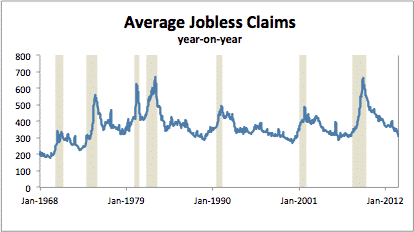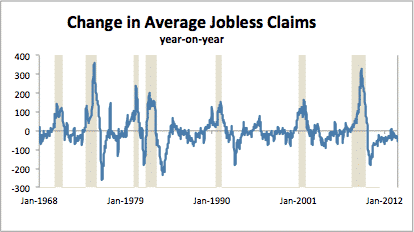Should the Fed look through weak Q1 consumption data?
The biggest question facing the Federal reserve is whether their data dependency means looking through weak Q1 data and raising rates this summer anyway. Given the key elements of the Fed’s reaction function as I laid them out yesterday, the answer is yes. If the Fed is concerned narrowly with stabilizing the long-term path of inflation and arriving at a NAIRU-style full employment threshold, the data are relatively categorical that liftoff must begin this summer. The critical data flow comes from the jobs data in the next few months, with the first of three monthly reports out tomorrow. Some thoughts below
Before I go into this piece about cyclical macro data, I should point out that my secular view is more bearish than my cyclical view because I believe the U.S. financial system is still over-levered, household debt is still high, and wage growth has been lacklustre. What I believe this means is that, when thinking about the recent Larry Summers – Ben Bernanke blog fight, I have to side with Summers in warranting caution about the future path of the U.S. economy.
The whole last post was dedicated to making clear that the U.S. is on a collision course with a Japanese outcome and I’m not sure monetary policy is the best tool to avoid that fate, given it works through the credit and asset transmission channels where problems still remain. I agree with Summers that, absent more fiscal support, this business cycle is unlikely to turn decidedly in favour of the average American worker. And the end result is that we will see a larger than anticipated deleveraging and a slower than desired recovery when this cycle turns down. The best case scenario is 1994, where recession was avoided and the credit cycle continued (and an asset bubble formed). The reasonable worst case scenario is 1997 Japan, where the country slipped into a soft depression and deflation. if the data change, I am willing to change that view. But at present I see nothing that makes me more optimistic.
However, on a cyclical basis, the data still look good.
I know Q1 was horrible but I have been telegraphing that it would be horrible for months. A lot of that is weather-related.
Arctic blast across U.S. will make the ‘polar vortex’ winter look tame
Q1 GDP numbers are going to be a disaster
— Edward Harrison (@edwardnh)
Some of this is oil-related as well. We should expect at least a couple of percentage points loss due to the reduction in oil capital expenditure through the entirety of 2015. We should also expect the numbers to be well below where the Street is guiding us at this juncture.
Atlanta Fed GDPNow showing almost no growth in Q1. Wall Street estimates still well above
— Edward Harrison (@edwardnh)
March 25, 2015But I have been saying for some time that the Fed would look through this data just as it did in Q1 2014.
The FOMC policy statement after the Q1 2014 GDP disaster totally disregarded Q1 as an aberration.
— Edward Harrison (@edwardnh)
Why? Because the jobs numbers are so unequivocally good. And because earnings and personal income growth is now decent. The combination of job and personal income growth means the household sector can power forward, even if we see transitory dips in retail sales or an increase in the personal savings rate. I like to use the jobless claims number as a proxy for real-time and slightly forward-looking employment figures. What matters with jobless claims is the delta, the change from one period to the next, as much as the absolute number. All recessions coincide with a rise in initial and continuing jobless claims whereas the absolute numbers signal less. 

We should expect to see some ripples of distress in the job market before a recession hits us full bore. At the same time, jobless claims can be considered a contrary indicator in that the level of initial claims we are seeing are remarkably low and have persisted for longer than I expected. A rise is inevitable from these levels and would create a shock to consumption. In best case scenarios, the shock is temporary. In worst case scenarios, it combines with a slowdown in inventories and investment to tip the cycle down. My sense is that we are not there yet.
Moreover, I expect the jobs numbers tomorrow to be good enough to perhaps take us down to 5.4% unemployment, a step closer to the threshold for raising rates. If we see 5.3% for example, expect the Fed’s April statement to reflect that the number is very close to normal unemployment levels. And that is something the market is not prepared for.
The macro surprise index is still extremely negative in the US. So to the degree this trend continues, the Fed may have to hold fire, even if the unemployment rate is dropping. But we should expect the unemployment data and the other macro data to converge, and if they converge to the downside, the Fed will hold fire.
The US macro surprise index is at -55.6 but the Europe macro surprise index is at +45.3
— Edward Harrison (@edwardnh)
Bottom line: Given the Fed’s reaction function and mandate, it should look through the Q1 data and it is doing so right now. That makes the next three jobs reports crucial in terms of whether we see a hike this summer, with June still on the table. If other data continue to surprise to the downside, the Fed will delay but that does not mean it won’t eventually raise rates.
Comments are closed.